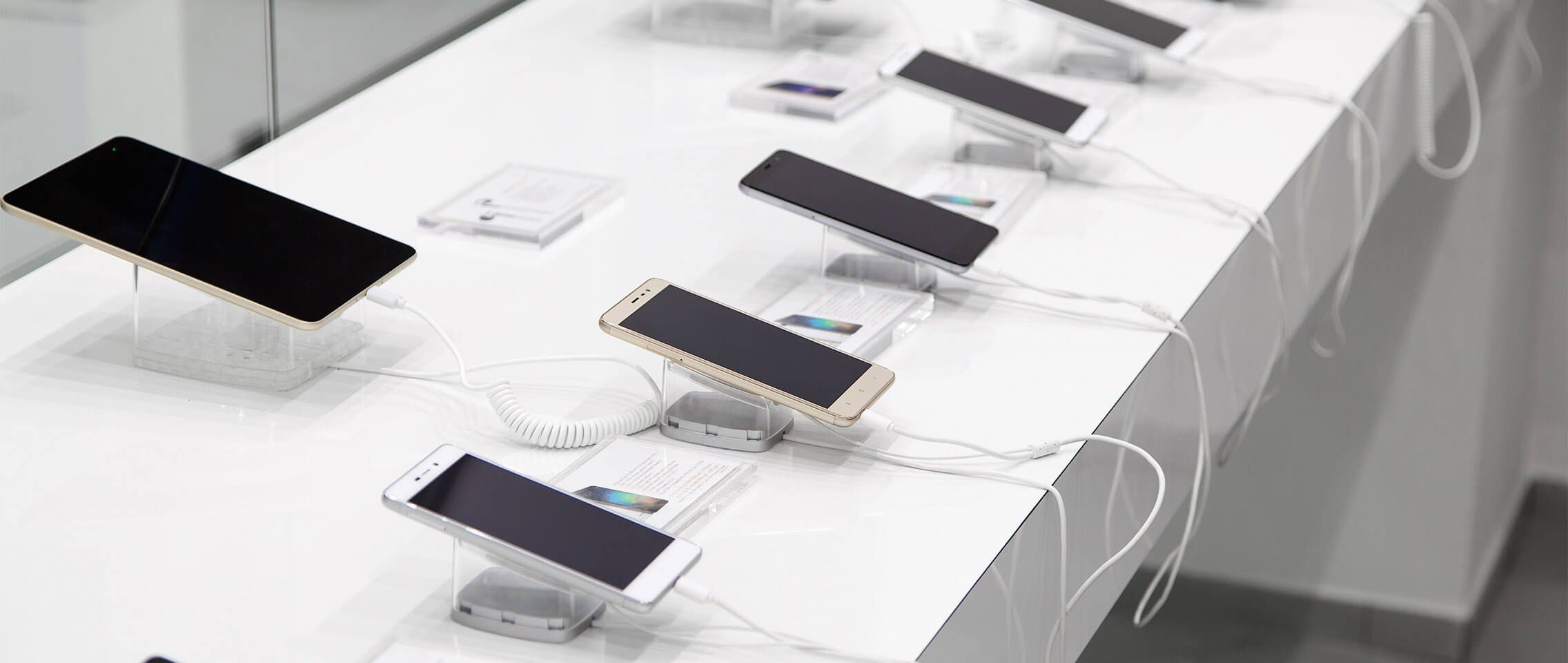Top 3 challenges for consumer electronics retailers
Aug 17, 2023 • 5 min
The growth of omnichannel retail has provided consumers with more options than ever to purchase goods. According to Statista, online sales will be responsible for generating 45.9% of total revenue in the consumer electronics market worldwide by 2023, with mobile phone retailers comprising the market’s largest segment with $498.30B in sales volume.
While this is a fantastic development for consumers, it brings new challenges for consumer electronics retailers when managing their inventory and supply chains. From big box retailers to smaller mobile phone shops, today’s electronics retailers need smart strategies to help:
- Accurately manage assortment and inventory complexities.
- Ensure inventory is available and in the right stores.
- Utilize store space effectively to meet the changing needs of their consumers.
Let’s dig a little deeper into these challenges.
1. Managing assortment and inventory challenges in omnichannel retail
A successful omnichannel retail strategy requires electronics retailers to be able to accurately predict consumer demand in each channel, helping them understand which products to stock in stores and which to carry online. But anyone working in retail today knows that consumer trends change rapidly. It can be extremely difficult to understand nuances such as which products will inspire customers to make an in-store purchase due to “immediate need” and which can be ordered online, requiring a wait of a few days for delivery.
Furthermore, today’s electronics products have shorter life cycles than ever before, making it difficult to gauge how long they will remain profitable before the next big item hits stores. In the past, retailers knew they had years to profit from electronic items before they became outdated. Today, products may have a life cycle as short as a few months.
Additionally, as consumers become more comfortable buying electronics online, retailers become unsure of how much volume to stock in store. According to a 2023 Forbes study, sales for electronics and appliances were down 7.2% year-over-year between 2022 and 2023. With sales down and an inflationary environment, it becomes expensive for electronics retailers to carry safety stock.
Telecom retailers selling mobile phones, mobile plans, and accessories have smaller store footprints than big box retailers, but still must stock the hottest cell phones and associated accessories, such as cases. While cases have a high-profit margin, shelf space is limited, so retailers need a basic assortment on hand to satisfy consumers who come in to purchase a phone. Consumers have more choices online, where retailers can carry phone cases in multiple colors and sizes. Understanding which cases to carry in a store and how quickly they need replenishment can be challenging.
Electronics and telecom retailers need advanced planning systems capable of accurately predicting demand by channel, then automatically optimizing store replenishment while ensuring enough inventory is reserved to fulfill online sales.
2. Store-level inventory accuracy impacts sales and customer loyalty
It’s a common challenge: a retailer has the right inventory somewhere in their supply chain, just not in the store where a customer is actually trying to buy it. Inventory accuracy and visibility directly impact sales in individual stores, but too many retailers lack a clear understanding of which stores in their network need to carry which products.
According to the Auburn University RFID Lab, the average level of inventory accuracy for U.S. retailers is 65%. Raising inventory accuracy by 10% to 30% would help retailers improve customer experiences and increase customer loyalty.
If a retailer’s website advertises a high-demand color of a hot new phone model available locally, it might inspire shoppers to make a store visit to get their hands on it immediately. However, disappointing them with a stock-out on their desired color and model risks not only losing that individual sale, but also potentially losing the lifetime value of a dissatisfied, inconvenienced customer because inventory promises online did not match in-store reality.
A planning solution that provides retailers with high inventory accuracy both ensures high availability and prevents overstocks that leave retailers stuck with carrying costs for unsold goods. Retailers should note that rising interest rates have increased the costs of carrying inventory, further reducing margins for those whose planning systems cannot provide an accurate projection of store-level inventory needs.
How can retailers plan more accurately in the future? Electronics retailers can balance availability and operational efficiency with tools that use AI to improve demand forecast accuracy across sales channels.
3. Changing the way space is used to accommodate consumer buying behaviors
As consumer buyer behaviors change, the role of brick-and-mortar stores and their space needs are also changing. For example, ROPO (research online, purchase offline) shopping behavior in the electronics sector is 30% higher than average over other consumer goods, according to an Omnishopper Study 2.0 on consumer behavior.
BOPIS (buy online, pick up in store) is also changing the way big box consumer electronics stores use their floorspace. Historically, electronics retailers displayed larger product categories such as cameras and camcorders, TVs, computers, and appliances. Each brand in each product category was represented and displays took up sizeable amounts of floor space. The displays were attractively designed to bring consumers into these categories so they could try them out. Retailers knew these products had long shelf lives and would return a profit.
Today, big box electronics retailers in the U.S. are downsizing their store spaces, using the smaller footprint to provide information about products, answer customer questions, and act more as a technology destination. Stores are able to display fewer goods because customers can order the products they want in the store for home delivery. Many big box retailers are shifting their focus toward making shelves look full even though there are fewer products in the store.
Alternatively, retailers in Asia and Europe have smaller store footprints, and retailers want to maximize existing space with strategies that include using planograms for the backrooms that serve multiple purposes. For these retailers, the assortment optimization must account not only for a front-of-store physical shelf but also a backroom that serves as a micro-fulfillment center supporting the online virtual shelf. Retailers can decide which products are displayed and how much space is needed to stock hot-selling items based on the size of their backroom capacity.
Challenges are not siloed – nor are the solutions
The challenges electronics retailers face across their inventory, space, and supply chain planning processes are not siloed, but interwoven. Electronic retailers are looking for unified solutions that can assist them with space, inventory, and assortment challenges without creating more complexity and chaos.
The electronics product category is dominated by large global vendors that have far greater power and influence than comparable vendors in other retail categories. The unique vendor power structure in consumer electronics creates unique supply chain complexities not seen in other retail categories.
How can electronics retailers today push their inventory accuracy and utilize their smaller footprints to their best advantage? Find out how RELEX helps this industry solve complex challenges like optimizing inventory across the entire supply chain and improving omnichannel availability to exceed customers’ expectations.




